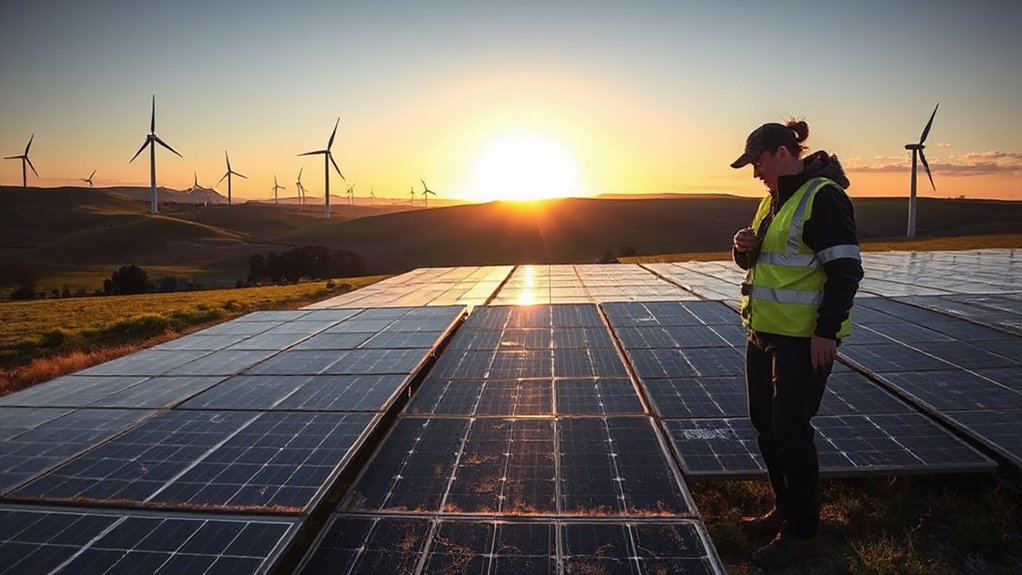While renewable energy once struggled with unpredictability, artificial intelligence is now transforming how wind and solar assets operate. Gone are the days when a cloudy sky meant power shortages. AI algorithms now crunch massive amounts of sensor data, weather patterns, and historical performance to predict exactly when that solar panel might fail or when wind turbines need maintenance. It’s like having a crystal ball—except this one actually works.
These smart systems are slashing downtime and extending equipment life. Wind farm operators aren’t wasting money replacing perfectly good turbine parts anymore. They’re fixing things only when needed—what a novel concept. Modern wind turbines can now convert up to 45% of wind energy into electricity, significantly improving their overall efficiency. The results? Asset lifespans get longer, ROI improves, and everybody stops throwing money into the renewable energy money pit.
Predictive maintenance—the magic wand that turns renewable energy from money pit to profit center.
Grid management has gotten a serious upgrade too. AI balances the notoriously fickle output from wind and solar in real time, reducing distribution losses by up to 30% and boosting reliability by 25%. When demand spikes, these systems don’t panic—they reallocate energy and tap storage resources without breaking a sweat. No more blackouts because someone didn’t see a cloud coming. AI systems can intelligently manage energy storage solutions to retain excess renewable energy for later use.
The bottom line is getting healthier. AI-powered forecasting and production optimization are boosting output from existing assets, increasing efficiency by 15-25%. Even smaller producers can now play with the big boys through AI-enabled trading platforms. The market is rapidly growing, set to reach US$ 4.85 billion by 2032 as more companies adopt these technologies. Virtual power plants are creating entirely new revenue streams. Money talks.
Perhaps most importantly, this tech is accelerating our shift away from fossil fuels. More efficient renewables mean fewer emissions, less waste, and faster progress toward decarbonization targets. The grid is getting smarter about using zero-emission sources first, reducing our carbon footprint with every optimization.
The renewable energy transformation finally has the brains to match its ambition. And it’s about time.
References
- https://www.hanson-inc.com/insights/blog/ai-will-continue-to-shift-energy-industry-in-2025/
- https://www.datamintelligence.com/research-report/ai-in-renewable-energy-market
- https://www.bcg.com/publications/2025/ai-in-energy-new-strategic-playbook
- https://www.iea.org/news/ai-is-set-to-drive-surging-electricity-demand-from-data-centres-while-offering-the-potential-to-transform-how-the-energy-sector-works
- https://www.morganlewis.com/blogs/datacenterbytes/2025/02/artificial-intelligence-and-data-centers-predicted-to-drive-record-high-energy-demand








